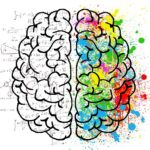How did the Gold Rush shape the development of San Francisco?
I'm looking for a detailed explanation of how the Gold Rush influenced the growth and cultural heritage of San Francisco.
The Gold Rush, which began in 1848 after gold was found at Sutter's Mill in Coloma, California, had an enormous influence on the development of San Francisco. Its impact reverberated through various aspects of San Francisco's growth and cultural heritage. Here’s an exploration of the key areas affected by the Gold Rush:
1. Populational Growth:
Before the discovery of gold, San Francisco was a small settlement of around 1,000 people. The news of gold transformed it almost overnight into a bustling port city as thousands of prospectors, known as '49ers, descended upon California in 1849. By the end of that year, the city's population had swelled to around 25,000. This rapid population increase continued, leading to greater diversification and laying the foundations for San Francisco's cosmopolitan nature.
2. Economic Expansion:
San Francisco quickly became the primary supply and banking center for the Gold Rush. Businesses sprang up to meet the demands of the gold seekers. Levi Strauss, for instance, started his clothing business in San Francisco during this time to sell sturdy garments to miners. The Gold Rush also accelerated the development of regional banking with the establishment of institutions like Wells Fargo, which initially provided secure transportation for gold.
3. Infrastructure and Urban Development:
The sudden population boom required significant infrastructure developments. San Francisco had to quickly adapt to its new role as a major city. The need for buildings, roads, and other urban infrastructure led to rapid construction. The Bay Area's transportation network also developed rapidly, as ships, roads, and, eventually, railroads were established to serve the influx of people and goods.
4. Cultural Diversity:
The Gold Rush was a global event, attracting people from all over the world. This resulted in a melting pot of cultures that greatly enriched San Francisco's social tapestry. The Chinese immigrant population, in particular, grew significantly during this period, leading to the formation of the now-famous Chinatown district in San Francisco - the oldest in North America.
5. Law, Order, and Governance:
The influx of prospectors and the subsequent wealth generated by the Gold Rush created an environment where crime could flourish. San Francisco's governance structures struggled to keep up with the rapid changes. Vigilante groups formed in response to the insufficient official law enforcement. As the city matured, more formal law enforcement and governance structures developed, helping to shape San Francisco's legal and political scene.
6. Environmental Changes:
The Gold Rush was also responsible for vast environmental transformations in the region. Hydraulic mining techniques caused considerable landscape alterations and water pollution. The demand for lumber to build the growing city and constructs mines drastically impacted surrounding forests.
7. Long-Term Social Impacts:
Many of the prospectors who came to seek their fortune in California decided to settle in San Francisco permanently, contributing to the city's social fabric. Education, arts, and sciences began to thrive as wealth generated from the Gold Rush was reinvested into the community, including the establishment of institutions like the California Academy of Sciences.
The Gold Rush was indeed a pivotal event in the history of San Francisco, acting as the catalyst for its transformation from a small village to a prominent city with international recognition. It injected capital and population into the city, fostering an environment of economic dynamism and cultural diversity. The legacies of the Gold Rush are still evident today in San Francisco's entrepreneurial spirit, its embrace of diversity, and its reputation as a hub of innovation.


